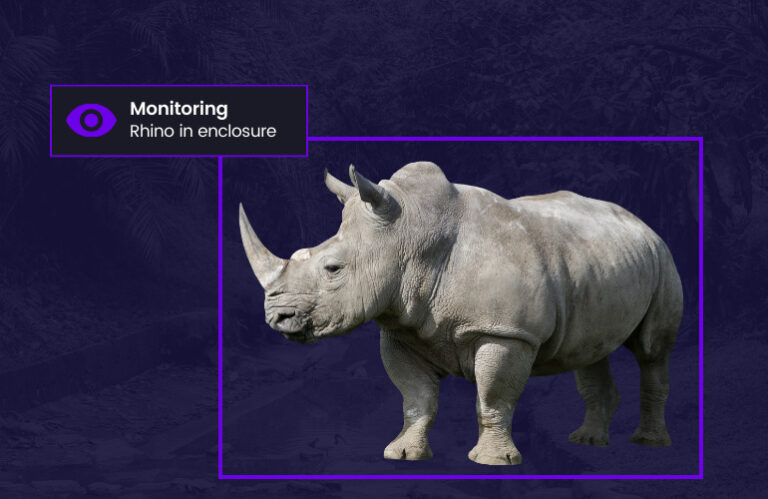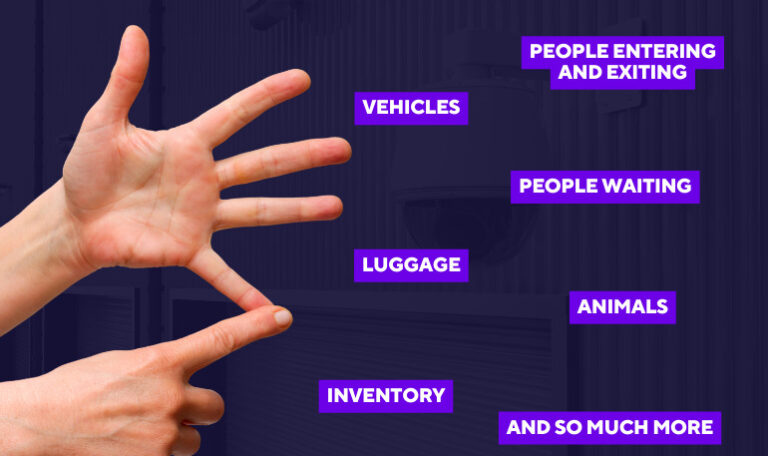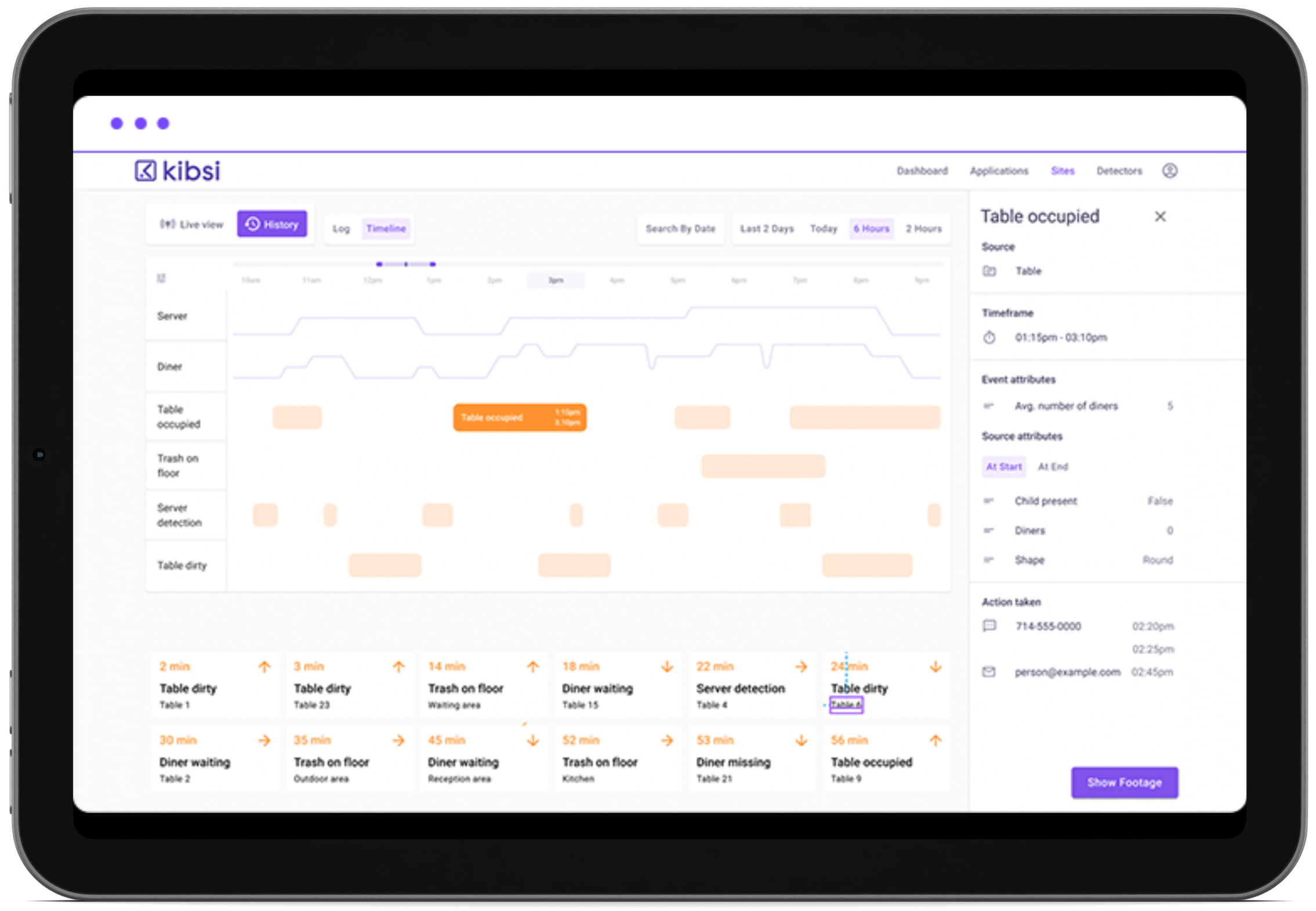Zoos play a crucial role in wildlife conservation, education, and research. Ensuring the well-being of animals within these facilities is a top priority, and understanding their behavior and habitat utilization is key. Traditionally, monitoring animals in zoo enclosures has relied on manual observations, which can be time-consuming, labor-intensive, and prone to human error. However, with the advent of computer vision technology, specifically with Kibsi, a groundbreaking solution is at hand.
The Importance of Monitoring Animals in Zoo Enclosures:
Monitoring animals in zoo enclosures serves multiple purposes. It enables zookeepers, animal behaviorists, and researchers to gain valuable insights into animal behavior, habitat preferences, social interactions, and overall welfare. Such information aids in designing appropriate enrichment programs, evaluating enclosure design effectiveness, detecting abnormal behaviors, and making data-driven decisions to enhance the well-being of the animals.
Challenges with Traditional Monitoring Methods:
Until recently, monitoring animals in zoo enclosures involved relying on human observers to track and document animal movements physically. This approach has its limitations, including the inability to provide round-the-clock monitoring, the potential for observer bias, and the challenge of capturing precise and detailed data on animal behavior. The need for a more efficient and accurate solution led to the adoption of computer vision technology.
The Rise of Computer Vision in Zoo Enclosures:
Computer vision, powered by advanced machine learning algorithms, offers an innovative and efficient way to monitor animals in zoo enclosures. Among the leading platforms, Kibsi stands out with its no-code computer vision capabilities, providing a robust solution for real-time data collection, analysis, and visualization.
How Kibsi Revolutionizes Animal Monitoring:
Kibsi enables zoos to employ computer vision technology to monitor animal behavior in a more precise, automated, and comprehensive manner. Let’s delve into a real-world example of how Kibsi is transforming the monitoring of rhinos within a zoo enclosure.
Mapping Cameras to an Overhead View:
To effectively monitor rhino behavior, Kibsi maps each of the five cameras positioned around the enclosure to an overhead view of the habitat that’s to scale. This mapping allows for the translation of objects captured in the camera view to their corresponding locations on the enclosure map.
Utilizing the Rhino Detector:
Using a custom-built rhino detector within Kibsi, each rhino within the enclosure can be detected, tracked, and logged every few seconds. This data is then plotted on the top-down view, providing a comprehensive understanding of the rhinos’ movements and behavior patterns.
Generating Heatmaps for In-Depth Analysis:
The data collected from the rhino detector is invaluable for assessing habitat utilization. With Kibsi, this data is transformed into informative heatmaps overlaid on the enclosure map. The heatmaps showcase the duration of time the rhinos spend in different areas, offering insights into their preferred locations and behavioral patterns over specific periods, such as a 24-hour cycle.
Overcoming Challenges:
One of the key challenges in monitoring animals using computer vision is the translation from the camera view to the top-down view. This crucial step provides animal welfare scientists with a complete and digestible picture of the data. Kibsi’s mapping capability and custom detector address this challenge, allowing for accurate and reliable data interpretation.
Why Computer Vision with Kibsi is the Ideal Solution:
Computer vision, especially with the powerful features of Kibsi, offers numerous advantages in monitoring animals within zoo enclosures. It provides continuous and automated monitoring, reducing the need for manual observations. Furthermore, the precision and accuracy of computer vision technology eliminate human error and enable data-driven decision-making based on reliable and objective insights. With Kibsi, zoos can enhance animal welfare, optimize habitat design and enrichment programs, and contribute to scientific research by gathering detailed behavioral data.
The Benefits of Kibsi in Animal Monitoring:
- Improved Accuracy: Kibsi’s advanced computer vision algorithms ensure precise detection and tracking of animals, eliminating the potential for human error and providing accurate behavioral data.
- Real-time Monitoring: Kibsi enables continuous monitoring of animals, offering a comprehensive understanding of their behavior throughout the day and night. This real-time data allows for prompt interventions if any abnormal behaviors are detected.
- Efficient Data Analysis: With Kibsi, data analysis becomes streamlined and efficient. The platform’s intuitive interface and powerful analytics tools enable zookeepers, researchers, and scientists to extract meaningful insights from the collected data without the need for extensive coding or technical expertise.
- Enrichment and Habitat Optimization: The data collected through Kibsi’s computer vision technology helps inform the design of appropriate enrichment activities tailored to the animals’ preferences and behaviors. It also aids in optimizing habitat design to ensure the well-being and natural behaviors of the animals are supported.
- Conservation and Research: The data gathered using Kibsi’s computer vision capabilities can contribute to broader conservation efforts and research initiatives. Insights gained from monitoring animal behavior can inform conservation strategies, contribute to species management, and advance scientific understanding of animal welfare and behavior.
Conclusion:
Computer vision, particularly with the powerful capabilities of Kibsi, has revolutionized the monitoring of animals in zoo enclosures. By leveraging advanced machine learning algorithms and real-time data analysis, zoos can gain valuable insights into animal behavior, enhance habitat design and enrichment programs, and contribute to conservation efforts. Kibsi’s no-code approach and seamless integration empower zoos to unlock the full potential of computer vision and create a brighter future for animal welfare and research.
With Kibsi, we are embarking on a new era of animal monitoring, where cutting-edge technology and a deep understanding of animal behavior intersect. Together, let’s pave the way for innovative advancements that promote the well-being of animals and foster a greater appreciation for the natural world.







